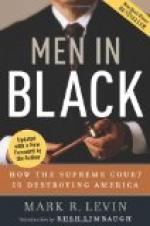As on the modern stage, there is a return to simplicity of acting. Naturalness and a constant regard for actuality is the only safe rule. Simplicity and naturalness, even if studiously affected, usually prove convincing. The aim is toward consistency and a non-elaborate manner.
Above all the lawyer remembers that the jury admire the good fighter, and it is with a certain obvious subtlety that one successful advocate in New York lets his assistant carry his coat, books, and papers, but he himself always carries his hat—a derby, by the way, for a high hat would be over important. The great man knows that the jurors are aware of the importance of the occasion and that their eyes will follow his every movement. As he walks up to the counsel table and deposits his derby it may well become a gage of battle.
The clerk at the side of the judge’s desk begins turning a large hollow wooden wheel; within it are cards on each of which is written the name of a juror who has been served by the sheriff to attend on the panel for the trial term of the court. The number summoned naturally is larger than the twelve needed for any one case. Often those who have to attend at a term of court sit about with nothing to do until they are actually drawn on a case, although they receive their fees for attendance. There is the story of the ignorant workman who was serving his first time on a panel.
“Why,” he said, “I was sitting around all day worryin’ about my lost working day. If I’d known I was getting two dollars for doing nothing I might have been enjoying myself.”
The clerk puts his hand into the wooden wheel after the names have been well mixed and draws out one card after another, calling the names aloud until twelve jurors have been called to the box.
To the entirely new spectator there is a certain mystification about this drawing of the jury from the wooden drum with the handle for turning. To the initiated it may seem rather humorous, like the shuffling of the cards of justice, the drawing from a hat, or the turning of a roulette wheel. It is, however, significant of one of the great principles of Anglo-Saxon law, and that is a trial by a court of average men selected from among the ordinary citizens and drawn on the particular case by chance.
As each juror’s name is called he comes forward and his appearance is not lost by counsel. He takes his seat in the box, the juror being first called is known as Juror No. 1, and by this chance, if he remain in the box, he ordinarily becomes the foreman of the jury. In cases of special juries, as of the Grand Jury, the foreman is chosen by selection. The successive jurors are respectively numbered according to their seats beginning from right to left facing them. Here it may be noted that some lawyers in addressing questions to the individual jurors are careful to remember to call them by name, realizing that no one likes to be known by a number. Instead of referring to him as Juror No. 7 or No. 9, he addresses him as Mr. Sullivan or Mr. Schmittberger.




